Analysis released on 11 October claimed a crisis with young children in the UK was “plateauing” (not changing). But new figures have revealed that this is not the case at all. And if anything, this serious issue is rapidly getting worse.
Plateauing?
As The Canary previously reported, analysis from Imperial College London (ICL) published in The Lancet showed childhood obesity levels are increasing worldwide. But the data from ICL appeared to show that childhood obesity is “plateauing” in the UK. At the time, The Canary noted that:
this masks the true reality of the situation. And it’s one where levels of obesity among the poorest children are spiralling out of control.
And now, the latest figures from NHS Digital prove this analysis in England.
Obesity, meet poverty
The National Child Measurement Programme has just published its findings for 2016/17 [pdf]. It found that, overall, obesity levels in year six children remained stable, but those for reception age children continued to rise, year-on-year. But digging deeper into the NHS analysis just compounds The Canary‘s previous assertion about the links between obesity and poverty.
NHS Digital found that children living in the most deprived areas of England were more than twice as likely to be obese compared to their richest peers. Both at reception age:
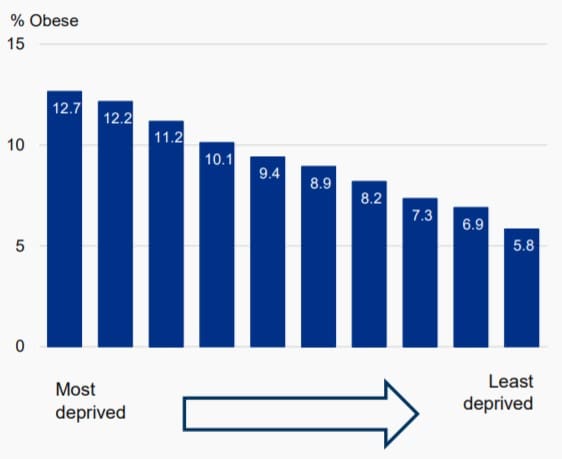
And at year six, but with the poor/rich gap much larger:
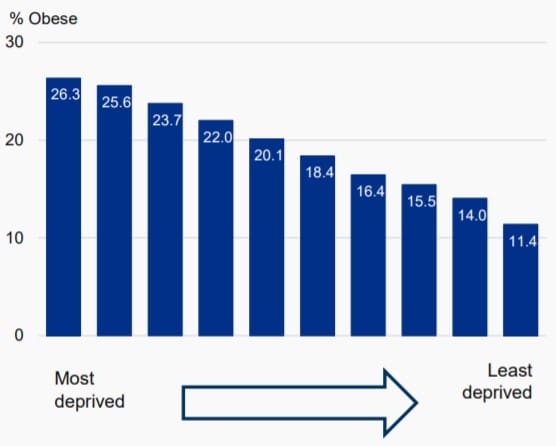
And over time, the gap between the most and least deprived children has steadily widened:
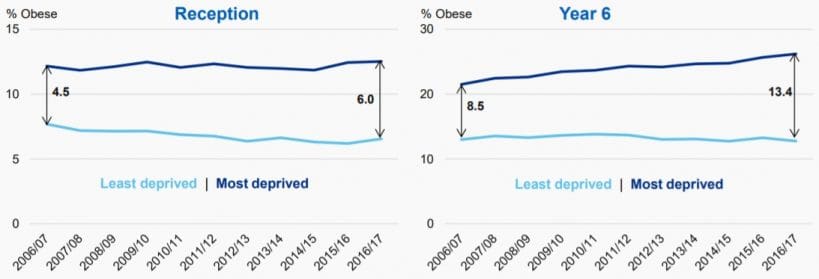
At both stages, obesity prevalence is higher [pdf, p16-17] in boys than in girls. It is also worse in disadvantaged urban areas and multicultural city locations than anywhere else [pdf, p19]. And aside from obesity, the report noted that [pdf, p13]:
In general underweight prevalence decreases as deprivation decreases
London had [pdf, p11] the most underweight children at reception age.
But the obvious class divide in childhood weight is replicated in nearly every other public health crisis.
Entrenched inequality
The same pattern can be seen in adult obesity [pdf, p11]:
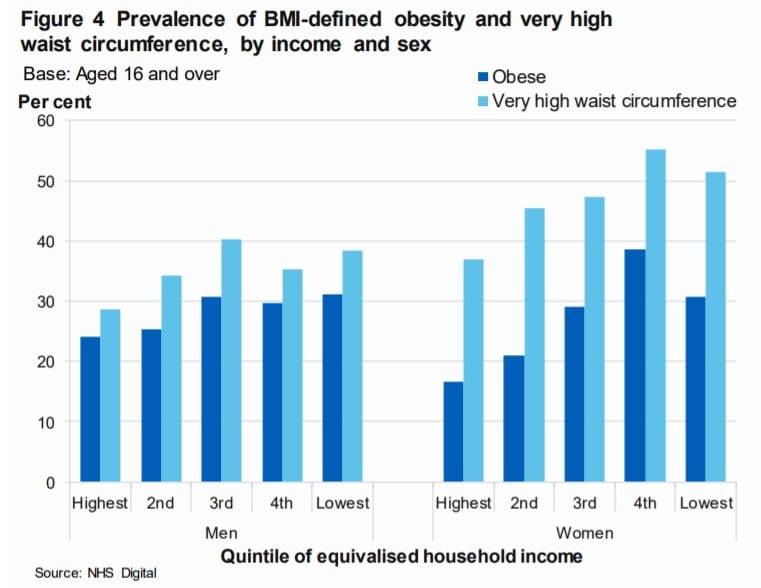
In smoking statistics [pdf, p10]:
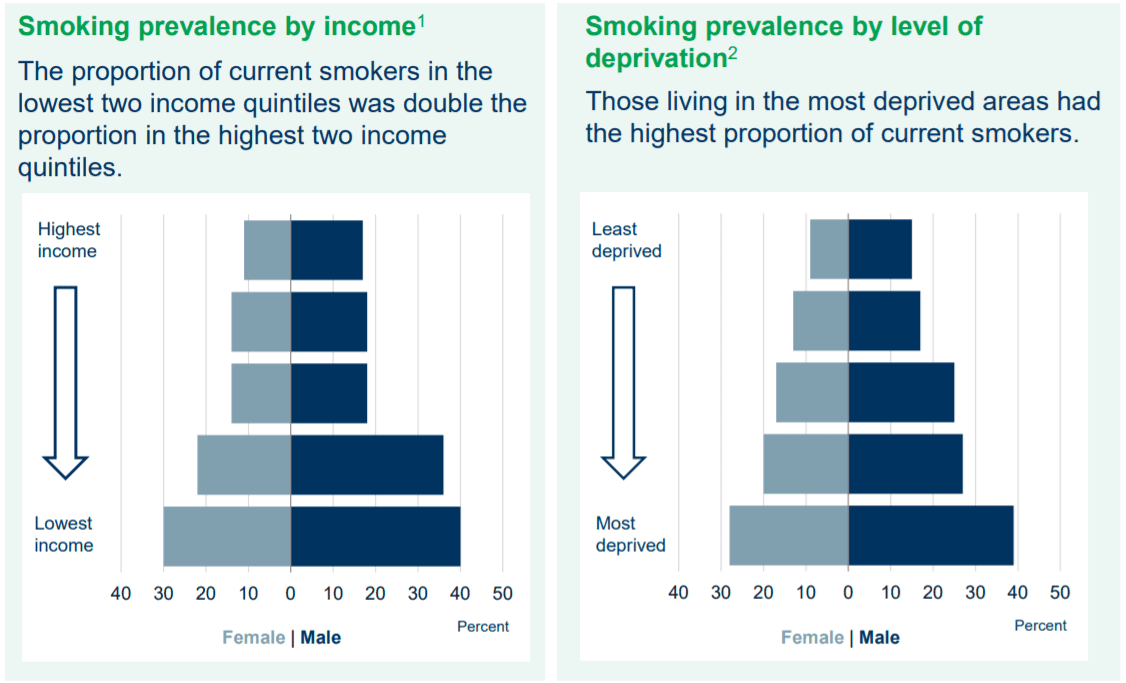
And also in alcohol-related deaths:
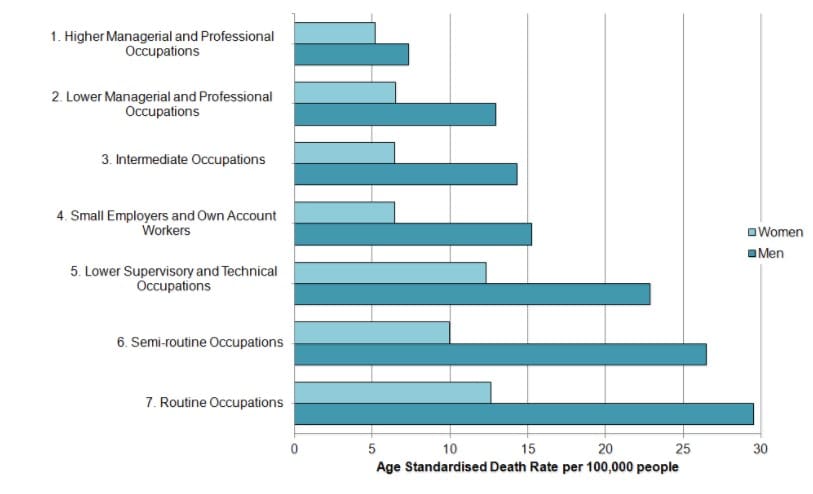
And alcohol-related A&E admissions [pdf, p19]:
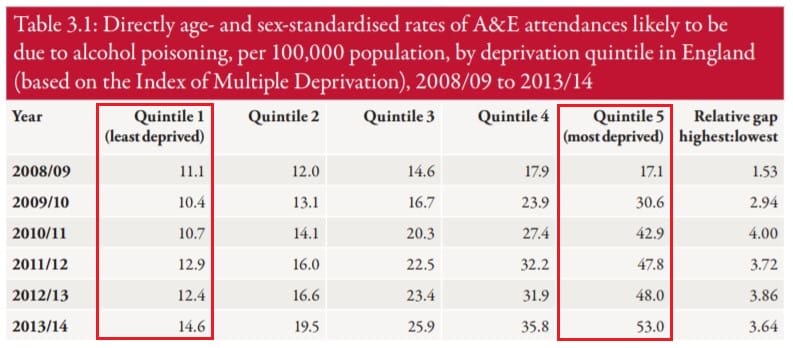
As with every public health emergency, the issue of childhood obesity is not one of ‘sugar taxes’, the state acting as a ‘nanny’, or regulation; it is one of classism and rampant inequality across all areas of life.
The real crisis: classism
With the clear link between poverty, inequality, and children’s weight, it would seem like a good idea for the government to tackle England’s deprivation problem. But instead, it has imposed measures like the two-child limit on tax credits. A policy which will affect hundreds of thousands of working families, and push an estimated 200,000 more children into poverty.
It is far easier for the government to tax soft drinks than to tackle the real cause of public health emergencies: classist inequality. This is sadly a reality that is not only rampant in society, but entrenched in the mindset of the party that’s in government.
Get Involved!
– Join The Canary, so we can keep holding the powerful to account.
















